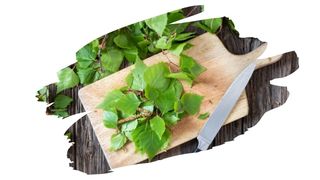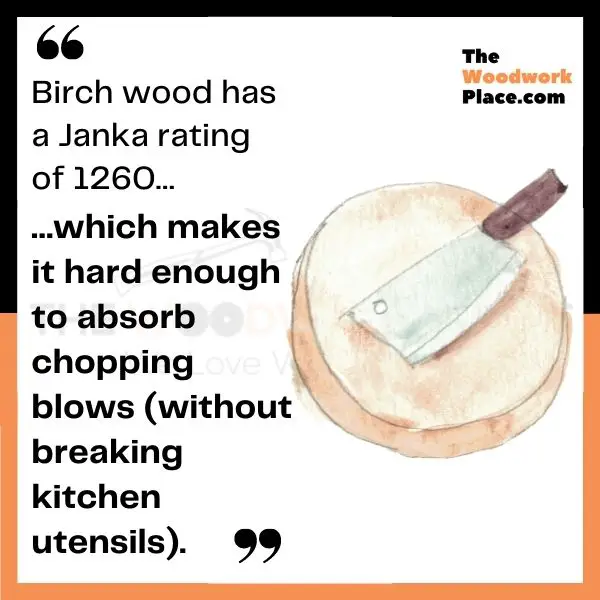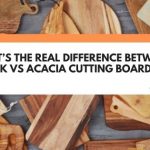Do you want to make a new cutting board—and you want to give Yellow Birch wood a chance?
Birch wood is easy to work with, strong, and affordable. So, why isn’t this straight grained hardwood more popular as cutting board lumber?
A possible reason is that Birch wood doesn’t have the stand-out grain definition that other hardwoods can have. But, that’s no reason to skip over this potential cutting board timber.
So in this post, you will learn why Birch woods density makes it perfect for cutting board material. And you will also discover why this lumbers straight grain helps to keep Birch cutting boards sanitized…

This post may contain affiliate links to products that we receive a commission for (at no additional cost to you). Learn more here.
What Is The Best Material For A Cutting Board?
Well, cutting boards need to be made from material that can do three things;
- Cleaning – Cutting boards need to be easy to clean, and simple enough to keep sanitized.
- Durability – Cutting boards need to be tough enough to take on heavy chopping blows without denting.
- Impact Absorption – And last, but not least, cutting boards need to be able to take on heavy blows, without damaging the actual kitchen utensil itself.
There aren’t a lot of materials that can balance all three well. But, wood, plastic, bamboo and rubber are the top four materials used for making cutting boards.
Which is why natural solid wood has been used for centuries for butcher blocks and chopping boards.
Related Post: 4 Reasons Why You Should NOT Use Polyurethane On A Butcher Block
And What Is The Best Kind Of Wood For A Cutting Board?
The best cutting boards are made from a dense tough wood that is also easy to sanitize.
Why The Wood Grain Type Matters For Cutting Boards – Easy to Sanitize
Cutting boards need to be made from a lumber that is tight grained.
Open-pored wood types, (such as Red Oak), make it too easy for food bits to lodge into wood grain. And if a board has been saturated with bacteria-filled bits of raw meat, it will take more than a soapy rinse to thoroughly clean them.

Why Density Range Matters For Cutting Boards – Durable Density
Cutting board wood needs to be both durably dense, yet not damaging to kitchen utensils.
So, the density and durability of wood, is measured using the Janka hardness scale. This scale measures how many pounds of force it takes to make a dent in a piece of wooden board.
The higher it’s Janka rating, the harder the timber.
For example, Maple wood (another popular cutting board wood), has a Janka rating of 1450. Which means that it takes 1450 pounds of force to make a dent in this hardwood.
Related Post: Cherry Vs Maple Cutting Boards (3 Essential Comparisons)
Now, when we select wood for a cutting board, the woods Janka rating should fall somewhere between 900 and 1500.
Anything more than 1500, and that chopping board is going to wreck your cooking tools. And less than 900, and you will end up chopping that board to splinters and bits.

And How Hard Is Birch Wood (According To The Janka Test)?
According to the Janka hardness scale, Yellow Birch clocks in at 1260. So, it will take a whopping 1260 pounds of force to really impact this lumber.
This puts Yellow Birch safely within that all important cutting board Janka hardness rating range.
Other types of Birch are also suitable for cutting boards, (such as Paper Birch, which has a Janka rating of 910).
And Sweet Birch, with its Janka hardness rating of 1470, just about falls under that all important cutting board hardness range.
So, Is Yellow Birch Good For A Cutting Board?
Yes, it is. Between Birch woods tight fine textured grain, and its tough but pliable 1260 Janka rating, this wood is ideal for making chopping blocks.
Plus, it is a comparatively medium-priced wood, that is a tad bit cheaper than Maple wood.
How Do You Treat A Birch Wood Cutting Board? To treat and maintain a Birch wood cutting board, saturate it with 100% food grade pure mineral oil every 1-2 months.
Related Post: Walnut Oil Vs Mineral Oil: Which One’s Better For Your Cutting Board?
To Wrap Up, Here Are The 3 Key Takeaways From This Post…
- 1). Birch wood is easier to sanitize because its tight grain prevents food bits from lodging into wood grain.
- 2). Birch wood has a Janka rating of 1260. Which makes it hard enough to absorb chopping blows (without breaking kitchen utensils).
- 3). Use food grade 100% pure mineral oil to treat and condition Birch wood cutting boards.



